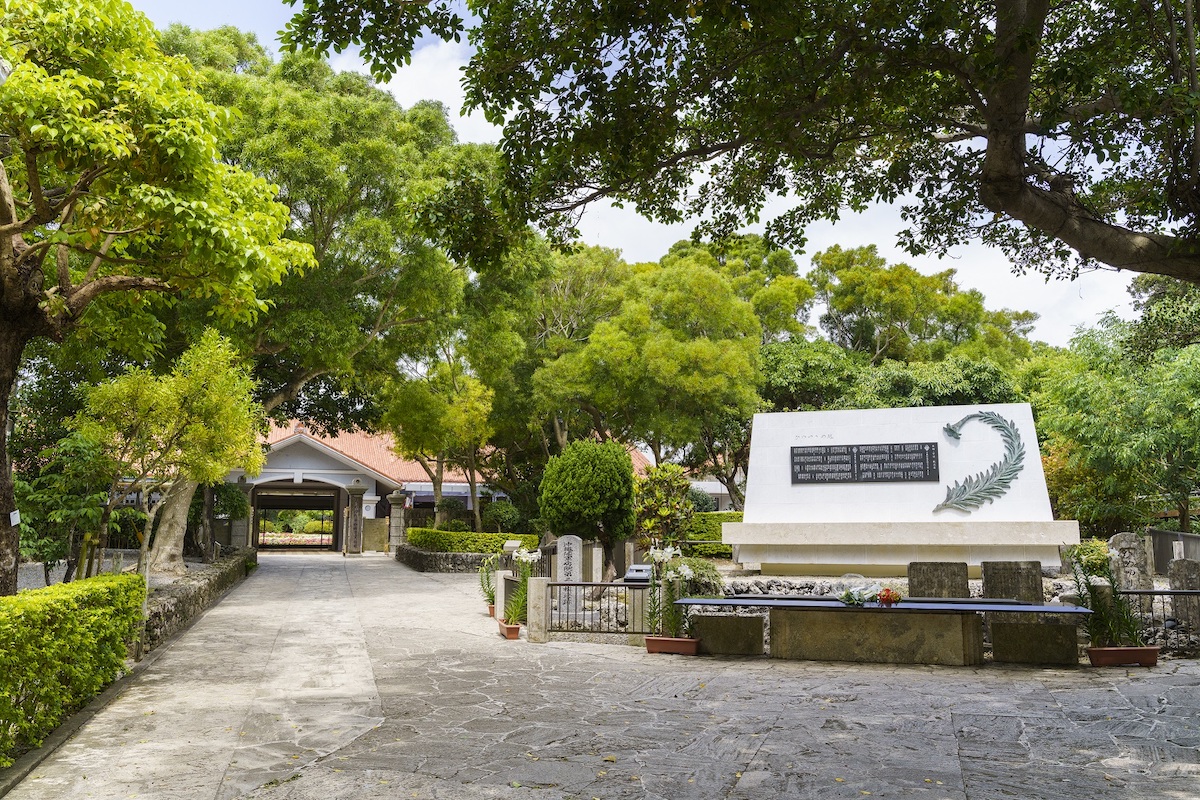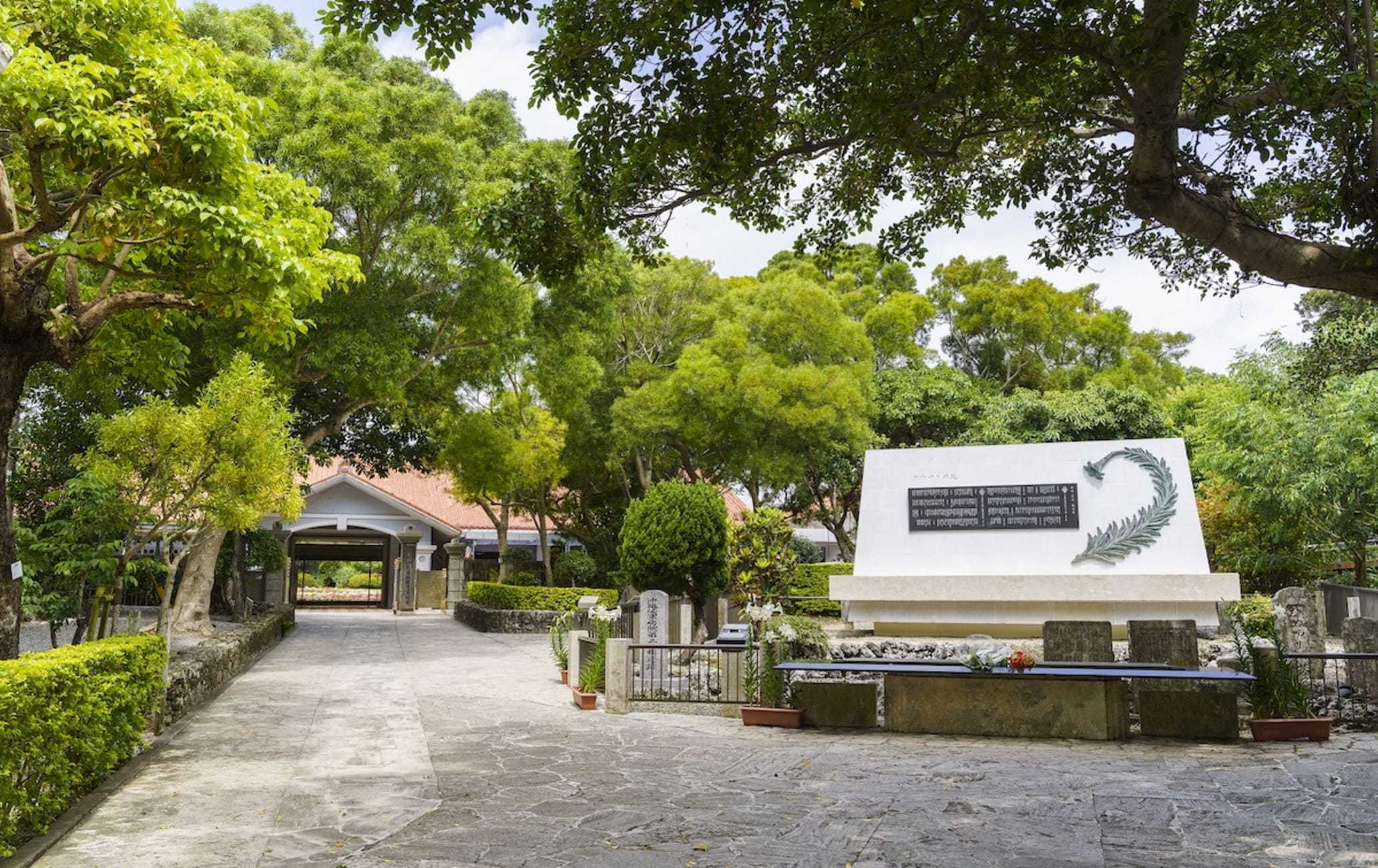Himeyuri Peace Museum
A plea for peace amid the wonders of nature
One of the tragic tales of WWII took place in Himeyuri, and the Himeyuri Peace Museum and Himeyuri Cenotaph are fitting tributes. An ancient cave twisting miles into the earth which also serves as a sobering reminder of Japan's recent past. There is much to see and think about here.
Don't Miss
- Learn about Okinawa during WWII at the Himeyuri Peace Memorial Museum.
- One of the largest caves in Japan, where caving is possible
- Valley of Gangala, a beautiful limestone cave and a unique venue
How to Get There
The Himeyuri Memorial Tower is accessible by bus. Take the 89 bus from Naha Bus Terminal to Itoman Bus Terminal, a 30-minute ride. Change at the Itoman City Bus Terminal to bus number 82, 107, or 108 for "Himeyuri-no-tou mae", a 15-minute ride. Take bus No. 50 or No. 51 from Naha Bus Terminal to Gyokusendo Cave (about 40 minutes), then walk about 1.5km.
If you're driving, take Route 331 south from Naha for about 40 minutes. Turn right onto 54 and the Himeyuri Cenotaph is just 2km along. It is about 10km from Himeyuri Cenotaph to Gyokusen Cave, which takes about 15 minutes by car.
Quick Facts
The Battle of Okinawa lasted approximately 3 months in 1945
Himeyuri Peace Museum commemorates the 227 students and teachers who died in the battle
The Himeyuri Memorial Tower was built in 1946
Gyokusendo Cave is home to stalagmites and more than a million stalactites
Habu Park is a museum dedicated to Okinawa's native snake
Visitors can see traditional Okinawan dancing and drumming in Kingdom Village

Himeyuri Peace Museum
The sacrifice of the Himeyuri students
In March 1945, 222 female students and 18 teachers were inducted into the Japanese Army to tend to the sick, carry food and water to the troops, and bury the dead. The girls came to be called the "Himeyuri Student Corps" after the war because the school's nickname was "Himeyuri".
With the situation worsening day by day, the group withdrew to the southern part of the main island of Okinawa (Itoman City) on May 25. On June 18th, the students and teachers were suddenly given an order to disband by the Japanese military.
In the early morning of the following day, one of the shelters where they were hiding was attacked, and 42 of the 50 Himeyuri teachers and students in the shelter were killed. Of the 240 members of the Himeyuri, 136 lost their lives in the Battle of Okinawa.
Memories of the Himeyuri
There are many reminders of this tragic episode in the Himeyuri Peace Museum, including the Himeyuri Cenotaph.
The spacious park around the cenotaph contains memorials to the Himeyuri students who lost their lives in the battle, which is sometimes known as Tetsu no Ame (Typhoon of Steel).
As you walk through the six chambers of the Himeyuri Peace Museum, the tale of the Lily Corps is brought to life with photographs, displays, video testimonies of survivors, and thoughts shared by visitors.
Gyokusendo; Japan's largest cave
No visit to Okinawa is complete without an exploration of Gyokusen Cave, the largest of its kind in Japan, and home to more than a million stalactites and stalagmites that have been forming over the past 300,000 years.
The cave was only discovered in 1967, and visitors can explore 890 meters of its five-kilometer length. The cave has many small streams and waterfalls. There are hand-railed walkways so you don't have to be a caver to negotiate the tour. However, the passages may be slippery in places so care is advised.
Colored lighting in some sections of the cave create startling formations, and it is easy to imagine great prehistoric monsters lurking in the shadows. In fact, the cave was used as the location for a Godzilla movie in 1974.
Snakes and their uses
Gyokusen Cave is part of a complex called Okinawa World, which also includes a recreation of a traditional Okinawan village and a museum dedicated to the habu snake. The habu is a venomous pit viper only found on the Okinawan islands. Its bite is not usually fatal but the effects can be serious if not treated.
Habu snakes are used to make the traditional Okinawan rice spirit known as awamori.
Some of the traditional houses in Kingdom Village are more than 100 years old and have been moved here and reassembled. At various times of day there are performances featuring traditional dancing and drumming, as well as sanshin performances. The sanshin is a three-stringed instrument similar to the Japanese shamisen, but Okinawan music is distinctly different.
The soundbox of a sanshin is light olive with brown blotches, yet another use Okinawans have found for the habu snake. Incidentally, mongoose were introduced into Okinawa in 1910 in an attempt to control the habu population. Unfortunately, habu snakes are nocturnal and mongoose are not, so the experiment failed.

























































